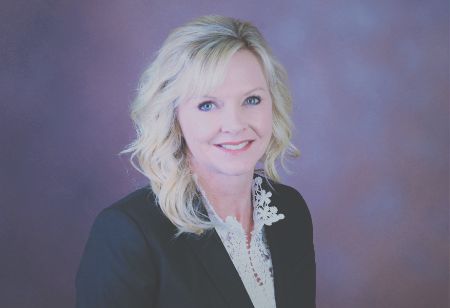Thank you for Subscribing to Healthcare Business Review Weekly Brief

Wisconsin system finds success with telemonitoring for COVID-19 patients
Healthcare Business Review
ProHealth Care is known in southeastern Wisconsin for outstanding care and innovation. The Waukesha County based system includes ProHealth Oconomowoc Memorial Hospital, ProHealth Waukesha Memorial Hospital, ProHealth Waukesha Memorial Hospital-Mukwonago, ProHealth Rehabilitation Hospital of Wisconsin, ProHealth Medical Group clinics, the UW Health Cancer Center at ProHealth Care, ProHealthAngelsGrace Hospice, ProHealth Home Care and other entities.
Since March 2020, ProHealth has provided telemonitoring services for nearly 1,700 adult patients at risk for COVID-19 complications. During surges in the pandemic, 100 or more patients have been monitored on a given day. Over 300 telemonitoring patients have received oxygen equipment and education under the program.
Telemonitoring is considered for patients in the community or discharging to the community who have had a respiratory-related diagnosis, suspected case of COVID-19, or are recovering from COVID-19. ProHealth’s telemonitoring nursing team provides the remote monitoring along with nursing assessment and intervention.
“The process for COVID-19 patients streamlines care and communication for patients presenting either for an office visit, urgent care visit, emergency department visit or upon hospital discharge,” said Jessica Zuercher, ProHealth’s director of the Continuum of Care. “The goal is to make sure patients receive the appropriate monitoring and follow-up from all care settings.”
Follow-up care is based on a patient’s risk of complications and severity of symptoms. It may include referrals to emergency care, scheduling of follow-up virtual or office visits, or visits from ProHealth Home Care’s staff.
Need for telemonitoring
ProHealth identified telemonitoring early on in the pandemic as a way to help COVID-19 patients avoid a higher level of care. It was a clear solution for providing connected care to patients who were able to care for themselves safely at home.
System leaders also recognized that telemonitoring would help prevent disease spread while optimizing provider and staff availability for patients with more concerning symptoms.
Telemonitoring patients must have a ProHealth primary care provider and meet risk-stratified medical criteria. They must have the ability to provide self-care or have an appropriate caregiver, have a smartphone or computer and Wi-Fi for MyChart use, and speak English or Spanish.
Upon referral to the telemonitoring program, patients receive a call from a nurse trained to offer telemonitoring services. An information sheet, pulse oximeter, and log for recording their oximeter readings, body temperature and symptoms are delivered to their home within a day.
Each patient receives a daily call from a telemonitoring nurse. Patients are asked to share their symptoms and measurements. The nurse enters the information into their medical record and alerts the patient’s physician if there are immediate concerns. Patients can also call a telemonitoring phone number or their provider with questions or concerns. Most patients are monitored for about 14 to 21 days.
Secure Chat instant messaging also allows hospitalists to connect directly with primary care providers to discuss patient care and transitions. Physicians, nurses, case managers, bed planners, unit coordinators and others are able to chat, email or call instantly while keeping information secure.
Before COVID-19, telemonitoring was exclusively provided by a team of ProHealth telemonitoring professionals. In spring 2020 when COVID-19 cases suddenly increased, nurses and other professionals from across the system stepped up to take telemonitoring shifts.
Physicians and nursing professionals received workflows, Epic instructions and telemonitoring information.ProHealth’s performance analytics professionals helped enhance staff scheduling processes and delivery of the patient packets, and Continuum of Care leaders trained the additional nurses.
Telemonitoring with oxygen
Supplemental oxygen services were added to the telemonitoring program in December 2020, for patients treated and discharged from a ProHealth hospital or emergency department. A team of professionals responsible for inpatient, emergency department and outpatient COVID-19 care collaborated with ProHealth’s Performance Excellence project engineers quickly to develop telemonitoring with oxygen care management and patient transition workflows, ensure oxygen equipment availability, and communicate details about the program to ProHealth clinicians and the vendor.
Eligible patients must meet all the criteria for the telemonitoring program and for supplemental oxygen. Respiratory therapists evaluate patients for the use and level of home oxygen.
Telemonitoring is considered for patients in the community or discharging to the community who have had a respiratory-related diagnosis, suspected case of COVID-19, or are recovering from COVID-19
Once home oxygen is ordered by a physician, a respiratory therapist provides oxygen equipment and education to the patient before discharge. A clinical representative from the oxygen vendor can also provide equipment and education during off hours, making the service available 24/7.
Patients also receive instructions for oxygen use, a concentrator or oxygen tank and cart on loan, an oxygen mask, tubing, and a blood pressure cuff. They are scheduled for follow-upvisits with their primary care provider.
The most recent surge in COVID-19 patients led to more patients hospitalized for COVID-19, with more severe illness. Many needed inpatient care for longer periods and required higher levels of oxygen.As they neared discharge, ProHealth teams aligned inpatient and outpatient oxygen-level protocols so more patients could be safely discharged for telemonitoring with oxygen.
Since its inception, the telemonitoring program has been an important resource for patients, providers and staff.In addition to enhancing patient safety, the services have helped ease inpatient capacity constraints during patient surges.
“Thanks to the team, the program started strong and has become even more significant over time,” said Julie Jackson, ProHealth’s vice president for Continuum of Care. “Their ability to be nimble and respond to the ever-changing needs of our patients has made a major difference for these patients and our system.”









